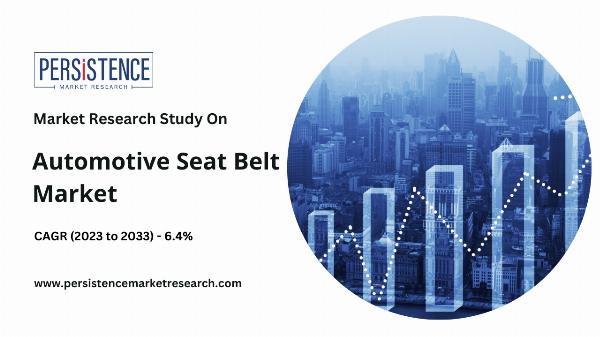Automotive Parts Aftermarket: Innovations Transforming the Market Landscape

Strong 8k brings an ultra-HD IPTV experience to your living room and your pocket.
In 2022, the automotive parts aftermarket generated revenues totaling US$ 548 billion, a figure expected to grow significantly in the coming years. The market's acceleration is driven by the dominance of the top 5 market players and a projected increase to US$ 984 billion by 2033, with a compounded annual growth rate (CAGR) of 5.5% from 2023 onwards. Several factors are contributing to this growth, including heightened consumer awareness about vehicle maintenance, particularly to uphold performance and efficiency. The rising popularity of crossover and long-distance vehicles further fuels demand for frequent servicing and parts replacement. Additionally, advancements in vehicle design and production flexibility are enabling stronger customer customization, thereby expanding market opportunities. The automotive sector has also seen increased vehicle longevity due to technological innovations, prompting higher demand for replacement parts, repairs, and maintenance services as older vehicles are retained longer. This trend underscores the robust growth prospects and evolving dynamics within the automotive parts aftermarket.
Key Innovations Driving Transformation
- Electric Vehicle (EV) Components: With the rising adoption of electric vehicles, aftermarket suppliers are developing specialized components such as batteries, charging stations, and electric drivetrain parts. These innovations cater to the maintenance and customization needs of an expanding EV market.
- Connected Car Technologies: Integration of IoT (Internet of Things) and telematics in aftermarket products enables real-time vehicle diagnostics, remote monitoring, and predictive maintenance. Connected car solutions enhance vehicle safety, efficiency, and user experience.
- 3D Printing: Additive manufacturing technologies like 3D printing enable on-demand production of customized automotive parts. This innovation reduces lead times, enhances design flexibility, and supports cost-effective small-batch production of complex components.
- Advanced Materials: Innovations in materials science focus on developing lightweight, durable, and eco-friendly materials for aftermarket parts. Composite materials, recycled plastics, and bio-based polymers contribute to improved fuel efficiency and reduced environmental impact.
- Augmented Reality (AR) and Virtual Reality (VR): AR and VR technologies are revolutionizing the aftermarket service experience. These tools assist technicians with repair procedures, provide interactive training modules, and offer immersive product demonstrations for consumers.
Impact on Market Dynamics
- Enhanced Customer Experience: Innovative aftermarket solutions improve accessibility, reliability, and functionality, enhancing overall customer satisfaction. Personalized product offerings and enhanced service capabilities cater to diverse consumer preferences.
- Market Expansion: Technological advancements broaden the scope of aftermarket offerings, attracting new customer segments including fleet operators, tech-savvy consumers, and enthusiasts seeking performance enhancements.
- Operational Efficiency: Automation and digitalization streamline supply chain management, inventory control, and service delivery. Data-driven insights enable proactive maintenance scheduling and optimized resource allocation, driving operational efficiency.
Industry Collaboration and Investment
- Partnerships with OEMs: Collaborations between aftermarket suppliers and original equipment manufacturers (OEMs) facilitate access to proprietary technologies and ensure compatibility with vehicle systems. Joint ventures and strategic alliances support product innovation and market penetration.
- Startup Ecosystem: Emerging startups and technology firms contribute to market innovation by introducing disruptive solutions such as autonomous vehicle components, blockchain-enabled supply chain transparency, and AI-driven predictive analytics.
Future Outlook for the Automotive Parts Aftermarket
The future of the automotive parts aftermarket promises a landscape rich with opportunities and challenges, shaped by evolving consumer behaviors, technological advancements, and global market dynamics. Looking forward, several pivotal trends and developments are poised to define the trajectory of this dynamic sector.
- Continued Growth Trajectory The automotive parts aftermarket is set on a robust growth path, with forecasts indicating a steady compound annual growth rate (CAGR) of 5.5% from 2023 to 2033. By 2033, the market is projected to exceed US$ 984 billion, driven by rising vehicle ownership, technological innovations, and increasing consumer demand for dependable aftermarket solutions.
- Shift Towards Electric and Hybrid Vehicles The swift adoption of electric and hybrid vehicles marks a transformative shift in the automotive landscape. With governments worldwide implementing stricter emissions regulations and consumers embracing sustainable mobility solutions, there is a burgeoning demand for aftermarket components tailored to electric propulsion systems. This includes batteries, charging infrastructure, and specialized maintenance services, offering new avenues for growth and innovation.
- Technological Advancements Advances in vehicle technology, such as artificial intelligence (AI), connected systems, and autonomous driving capabilities, are reshaping the aftermarket sector. These technologies not only enhance vehicle performance and safety but also necessitate sophisticated aftermarket solutions. Manufacturers and service providers are increasingly focusing on developing smart components, predictive maintenance tools, and digital platforms to meet the evolving demands of modern vehicles and consumers.
- Emphasis on Sustainability and Circular Economy Environmental sustainability is increasingly driving decisions in the automotive industry, influencing consumer preferences and regulatory frameworks alike. The aftermarket sector is responding by promoting eco-friendly practices such as remanufacturing, automotive parts recycling, and reducing carbon footprints throughout the product lifecycle. These sustainable initiatives not only bolster brand reputation but also align with global initiatives aimed at achieving carbon neutrality and reducing resource consumption.
- Regional Market Dynamics Regional disparities in consumer preferences, economic conditions, and regulatory landscapes continue to shape the automotive parts aftermarket. Mature markets like North America and Europe prioritize quality, reliability, and technological innovation. Conversely, emerging markets in Asia-Pacific and Latin America offer significant growth prospects driven by increasing vehicle penetration rates, urbanization trends, and rising middle-class incomes.
- Digital Transformation and Enhancing Customer Experience Digitalization is revolutionizing the aftermarket customer experience, facilitating seamless online transactions, personalized service recommendations, and real-time vehicle diagnostics. Digital platforms and e-commerce channels empower consumers to research, purchase, and schedule services effortlessly, enhancing efficiency and customer satisfaction. This digital transformation also promotes greater transparency, collaboration, and operational efficiency throughout the aftermarket supply chain.
As the automotive parts aftermarket evolves, these trends underscore the industry's dynamic nature and the critical role of innovation, sustainability, and consumer-centric strategies in shaping its future growth and competitiveness globally.
Note: IndiBlogHub features both user-submitted and editorial content. We do not verify third-party contributions. Read our Disclaimer and Privacy Policyfor details.







